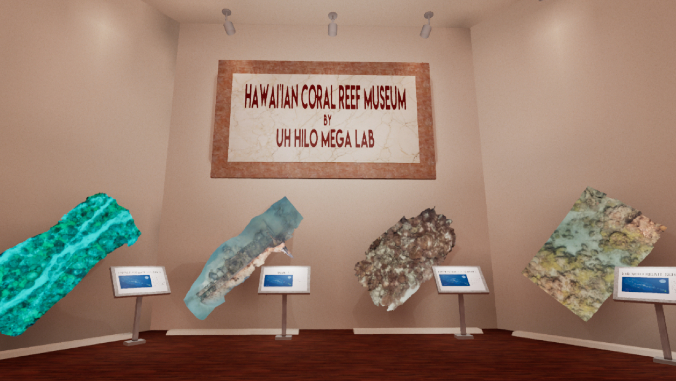
Researchers from University of Hawaiʻi received top awards for the 2020 Practice & Experience in Advanced Research Computing (PEARC), an annual conference that explores current practice and experience in advanced research computing including modeling, simulation and data-intensive computing.The researchers consisted of UH faculty, staff, graduate and undergraduate students working in areas of cyberinfrastructure, artificial intelligence (AI) and virtual reality (VR).
Sean Cleveland, a cyberinfrastructure research scientist with UH Information Technology Services along with Director of Cyberinfrastructure Gwen Jacobs and a team from the Texas Advanced Computing Center received Best Paper in application software, support and outcomes for their paper on Tapis, a research framework that provides a hosted, unified web-based Application Program Interface for securely managing computational workloads across institutions supporting tools for scientists to gather data and conduct computationally intensive research.
UH Mānoa’s Laboratory for Advanced Visualization and Applications (LAVA) graduate students Alberto González Martínez, Troy Wooton, Nurit Kirshenbaum, Dylan Kobayashi and LAVA director and professor of information and computer sciences Jason Leigh won Best Paper in Trending Now–Machine Learning and Artificial Intelligence for their work on human steerable AI. This work allows analysts to steer computer models and make insights based on domain knowledge that are more easily recognized by humans than a computer running a mathematical algorithm.

Additionally, a team of UH Hilo and UH Mānoa faculty, staff and students won Best Visualization Showcase for their work in exploring coral reefs in Hawaiʻi through VR. Thousands of images from long-term monitoring sites throughout the Papahānaumokuākea Marine National Monument were used to create high-resolution 3D reconstructions to create this immersive VR platform. This project ran over two years in collaboration with the Multi-scale Environmental Graphical Analysis lab.
Many of the award-winning faculty volunteered their time to serve on the PEARC20 committee to ensure a successful virtual conference after a quick pivot from the usual in-person format due to the COVID-19 pandemic. UH Hawaiʻi Data Science Institute Co-Directors, Jacobs and Leigh served as conference chair and visualization showcase chair respectively, with Cleveland serving as technical program co-chair.
UH researchers will present their award winning papers and visualization from July 27 to 31, 2020 at PEARC. Additionally, research from UH virtual institutes C-MAIKI and Hawaiʻi Data Science Institute, and Hawaiʻi EPSCoR‘s ʻIke Wai project will be presented throughout the conference, including work in science gateways, data visualization, and software applications for rainfall analysis and mapping and microbiome analysis.
List of PEARC20 awards won by UH researchers
Best Paper in Application Software, Support and Outcomes Track
Title: “Tapis API Development with Python: Best Practices In Scientific REST API Implementation–Experience implementing a distributed Stream API”
Authors: Sean Cleveland, Anagha Jamthe, Smruti Padhy, Joe Stubbs, Julia Looney, Michale Packard, Steve Terry, Richard Cardone, Maytal Dahan, and Gwen Jacobs
Best Paper in Trending Now–Machine Learning and Artificial Intelligence Track
Title: “Exploring collections of research publications with human steerable AI”
Authors: Alberto González Martínez, Billy Troy Wooton, Nurit Kirshenbaum, Dylan Kobayashi and Jason Leigh
Best Visualization Showcase Award
Title: “Exploration of Coral Reefs in Hawaiʻi through Virtual Reality: Hawaiian Coral Reef Museum VR”
Authors: Francis Ray Cristobal, Michael Dodge, John Burns, Briana Noll, Nickolas Rosenberg, Joseph Sanchez, Kailey Pascoe, Alexandra Runyan and Drew Gotshalk
—By Maria E. Dumanlang

